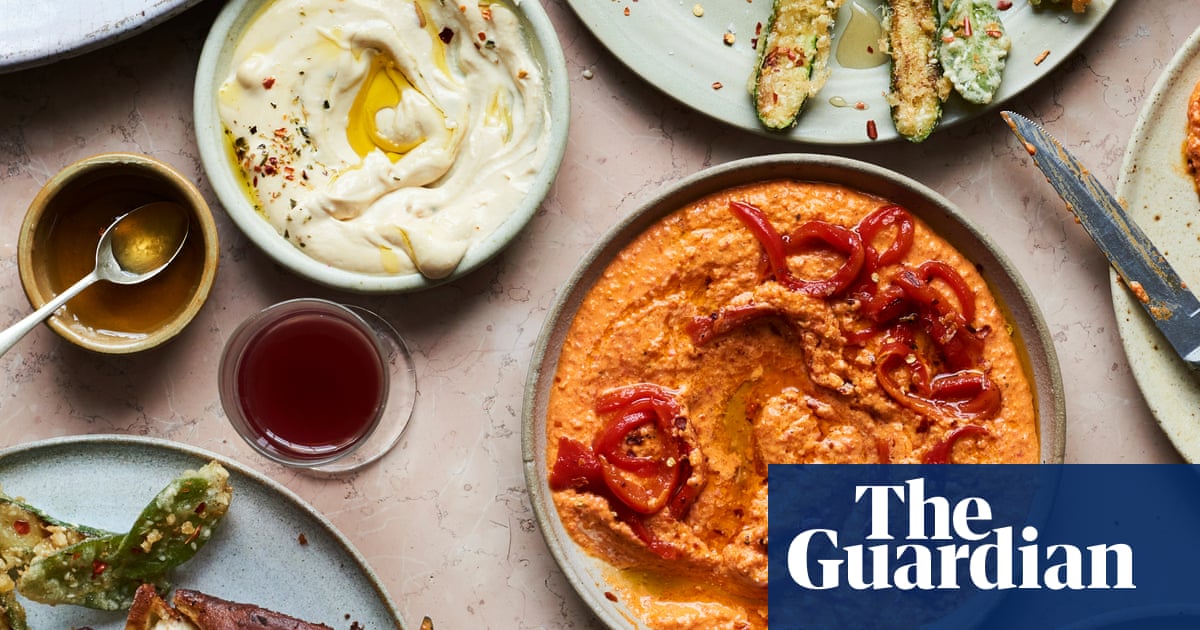Dips are a great unifier, whether they’re married to a big bowl of crisps and crudites or served as a companion for a picnic spread. If there’s hummus, cacik or borani in the picture, then it’s a party. Happily, says David Carter, founder ofSmokestak,MantecaandOmain London, “you can get a lot of good stuff in stores these days”. That said, he adds, anything involving vegetables is “always going to be best when made fresh”.
If your dip needs lead you to the shops, the trick is to create contrast. Much like getting dressed, you first need to consider the temperature. “Let’s say you have some shop-bought hummus,” Carter says. “If you put that in a pan with a bit of hot water and maybe some lemon juice, then whisk, the hummus will loosen, turn creamy and completely change from the usual fridge-cold stodge.”
Next, you’ve then got to accessorise your tub, which means toppings: “A lot of our dips in the restaurants have some form of texture, whether that’s crisp garlic, seeds or crisps,” he says. “If you’ve got something like a silky-smooth labneh and think, how am I going to jazz this up, spiced chickpeas would be one answer.” Similarly, Carter tops hisbaba ganoushwith a “very hot” tahini sauce and some crisp artichokes: “That’s contrast exaggerated.”
Sami Tamimi, author ofBoustany(out in June), meanwhile, is not a fan of dips that take a lot of time, which is why you’ll always find yoghurt or labneh in his fridge (“I don’t make my own any more”). They’re an easy win, and can be quickly turned into a dip with the addition of a squeeze of lemon, some garlic and whatever spices or herbs (fresh or dried) you have to hand: “If you’re doing a barbecue – especially if there’s a fatty piece of fish or meat involved – mix yoghurt with tahini, and add a little sun-dried tomato, some garlic, herbs anda lotof lemon juice.”
If, like Tamimi, your entertaining MO is to pile a load of dishes in the middle of the table, you also have to draw the line somewhere. For Tamimi, that line is tzatziki: “I just buy it, but the thing with readymade dips is that they don’t taste fresh, so you need to add a bit of zing.” That’s not to say you need to get all fancy, mind: just a squeeze of lemon, a bit of lemon zest and/or some fresh herbs (think mint, coriander) will “bring it to life”. While we’re at it, no one is ever making their own taramasalata (no arguments, please), so head to the shops and that’s a “really nice addition to brunch with bagels and smoked salmon”, Tamimi adds.
One dip that you’ll never catch him buying, however, ishummus: “That’s a big no-no. Shop-bought versions have so many stabilisers, they always taste grainy and they’re made with not enough tahini and not enough, well, everything!” Hummus, he insists, should be made fresh (“I boil more chickpeas than I need and freeze half for another day”) and eaten within two days. “There are nicer things you can buy, so, when it comes to hummus, just make it.”
Got a culinary dilemma? Emailfeast@theguardian.com
